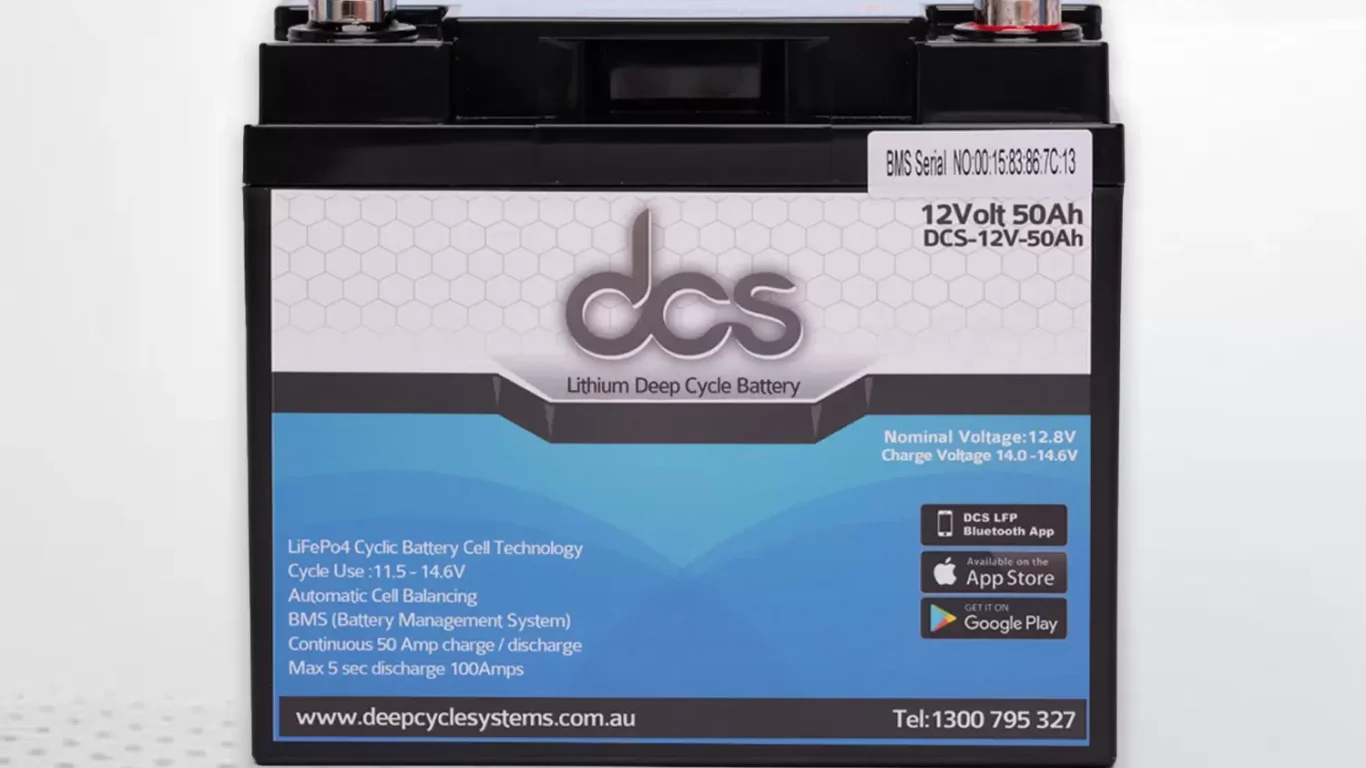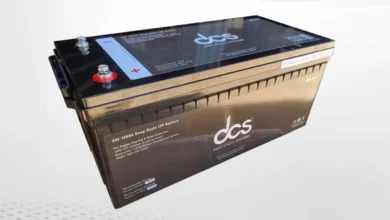Li Ion 50ah Battery: Precise Reliable Power Solutions

When it comes to powering your devices and equipment, reliability is key. This is where the Li Ion 50ah battery comes in. With its dependable power solutions, this battery has become a popular choice for various applications. In this blog post, we will explore the basics of 50Ah Li-Ion batteries, their advantages, maintenance tips, safety precautions, and future innovations, and help you determine if a 12v 50Ah lithium-ion battery is the right choice.
Unveiling the Basics of 50Ah Li-Ion Batteries
The core of what makes a 50Ah Li-Ion battery so essential for many devices is its sophisticated chemistry and design. At the heart of each Li-Ion cell, lithium ions move from the negative to the positive electrode during discharge and back when charging. This movement provides the energy to power devices, from small gadgets to large vehicles. The designation “50Ah” signifies the battery’s capacity to deliver 50 ampere-hours of power, offering a substantial amount of energy in a compact package. This capacity is a critical metric, as it determines how long a battery can run before recharging, directly impacting the usability and efficiency of the devices it powers.
A key attribute of these batteries is their recharge ability, paired with a notable energy density surpassing many other battery types. This high energy density is a boon for applications requiring long-lasting power without the bulk, making 50Ah Li-Ion batteries a preferred option for portability and endurance. Unlike NiCad batteries, Li-Ion cells do not suffer from the memory effect, which can reduce the effective charge capacity, thus ensuring consistent performance over many charging cycles.
Moreover, Li-Ion batteries’ self-discharge rate is relatively low compared to other rechargeable cells, meaning they retain their charge for longer periods when not in use. This characteristic is particularly beneficial for applications where batteries may not be regularly charged, such as emergency power supplies or seasonal equipment. Understanding these foundational aspects of 50Ah Li-Ion batteries reveals why they are an integral part of modern power solutions, catering to a broad spectrum of needs with reliability and efficiency.
The Advantages of Using 50ah Lithium Ion Battery
Adopting a 50ah Lithium Ion Battery as a power source offers several distinct advantages that cater to modern technology and energy requirements. Here are some notable benefits:
Higher Energy Density:
50ah Li-Ion batteries pack a significant amount of power into a smaller footprint compared to other battery types. This makes them ideal for applications where space and weight are critical, enhancing portability and efficiency.
Longer Lifespan:
With the capability to withstand numerous charge and discharge cycles, these batteries offer a longer service life. This reduces the need for frequent replacements, ultimately saving costs and reducing waste.
Quick Charging:
Li-Ion batteries are known for their rapid charging capabilities. A 50ah Li-Ion battery can reach full charge considerably faster than its counterparts, ensuring your devices and applications are up and running without downtime.
Low Maintenance:
Unlike some battery technologies that require regular maintenance to ensure peak performance, 50ah Li-Ion batteries are relatively low maintenance. This convenience factor is a significant advantage for users looking for reliable power sources with minimal upkeep. These benefits make 50ah lithium-ion batteries a compelling choice for various applications, aligning with those seeking efficient, durable, high-performance energy solutions.
Exploring the Wide Range of Applications
The 50Ah Li-Ion battery’s versatility and robust performance characteristics make it suitable for a broad spectrum of applications, highlighting its adaptability and value to various fields. Here are some notable uses:
Renewable Energy Systems:
It is an efficient storage solution for solar panels and wind turbines, ensuring a steady power supply even during low sun or wind activity periods.
Electric Vehicles (EVs):
The compact size and high energy density of these batteries make them ideal for electric cars, motorcycles, and bicycles, providing long-range power on a single charge.
Portable Electronics:
From high-end cameras and laptops to portable power tools, the 50Ah Li-Ion battery can meet the demanding energy needs of these devices without adding significant weight.
Emergency Power Supplies:
In critical applications such as medical equipment and emergency lighting, the reliability and quick charging capabilities of 50Ah Li-Ion batteries ensure that power is available when it’s most needed. These applications only scratch the surface of the potential uses for 50Ah Li-Ion batteries, as their advantages continue to make them a sought-after choice across diverse sectors.
Best Practices for Maintaining Your 50Ah Li-Ion Battery
Adhering to certain maintenance strategies is crucial to maximize the life and efficiency of your 50Ah Li-Ion battery. First and foremost, it’s important to keep the battery charged within its recommended levels. Consistently charging your battery before it falls below 20% and stopping the charge before it reaches 100% can significantly extend its lifespan by preventing stress on the cells. Implementing partial charges between 20% and 80% capacity is ideal for maintaining optimal health.
Temperature plays a pivotal role in the health of your Li-Ion battery. Avoid exposing the battery to extreme hot and cold temperatures, as these conditions can accelerate degradation. Storing the battery in a cool, dry environment when not in use can help preserve its integrity and performance over time.
Another key practice is utilizing the correct charger designed for your battery model. Chargers incompatible with your battery can lead to improper charging, potentially causing damage or reducing the battery’s lifespan. Always ensure that the charger and battery specifications match.
Regular cleaning of the battery contacts is also beneficial. Over time, dust and debris can accumulate on the contacts, hindering efficient energy transfer. Gently wiping the contacts with a clean, dry cloth can prevent this issue.
Lastly, it’s important to monitor the battery’s performance and health. If you notice significant changes in how long the charge lasts or if the battery starts to heat up excessively during use or charging, it may indicate that it needs to be examined or replaced.
By following these maintenance tips, you can help ensure that your 50Ah Li-Ion battery remains a reliable power source for your devices, prolonging its useful life and maintaining its performance.
Safety First: Understanding the Risks and Precautions
Li-Ion batteries, including the versatile 50Ah variant, are known for their reliability and efficiency. However, their energy-dense nature means they come with inherent risks that require careful management. One critical risk involves thermal runaway, a condition where an increase in temperature can lead to a self-sustaining cycle of heating and reaction, potentially causing fire or explosion. This is why using a Li-Ion battery within its specified operating conditions is paramount and employing protective measures like thermal management systems.
Proper charging practices are essential to prevent overcharging, one of the leading causes of Li-Ion battery failures. Users should ensure they use only the charger provided with their battery or one the manufacturer recommends. Overcharging can not only damage the battery but also pose significant safety hazards.
Physical damage is another concern. Dropping, puncturing, or otherwise compromising the integrity of a Li-Ion battery can lead to short circuits or breaches in the battery’s protective casing. Such events can expose the internal components to air, resulting in dangerous chemical reactions. Thus, handling batteries carefully and storing them in protective cases when not in use is advisable.
Additionally, while Li-Ion batteries are equipped with built-in safety features like protection circuits to prevent overcharging and deep discharge, users should not solely rely on these mechanisms for safety. Active monitoring of battery condition and performance, including looking out for signs of swelling and leakage, or unusual heat generation during charging or use, is critical. In case of any such signs, it’s imperative to stop using the battery immediately and consult a professional for advice. Engaging in these precautionary practices can significantly mitigate the risks associated with Li-Ion batteries, ensuring a safer experience for all users.
The Future Is Bright: Innovations in Li-Ion Battery Technology
The horizon of Li-Ion battery technology is expanding rapidly, fueled by groundbreaking research and innovations that promise to revolutionize power storage solutions. Among these advancements, solid-state batteries stand out for their potential to significantly enhance safety and energy density. By replacing the liquid electrolyte with a solid counterpart, these batteries reduce the risk of leakage and thermal runaway, paving the way for more compact and robust power sources.
Another exciting development is the push towards ultra-fast charging technologies. Scientists are devising new electrode materials and designs that facilitate quicker ion flow, aiming to slash charging times dramatically without sacrificing battery life or capacity. This could lead to a future where electric vehicles charge in minutes rather than hours, and portable devices require mere moments to power up fully.
Thermal management technologies are also seeing innovative leaps forward. The integration of advanced cooling systems and temperature-regulating materials within Li-Ion batteries works to maintain optimal operating temperatures, even under heavy use. This not only boosts efficiency and prolongs battery life but also adds an extra layer of safety by mitigating the risk of overheating.
Additionally, exploring alternative materials like silicon for electrodes promises to unlock higher capacities and longer cycle lives. Silicon can theoretically hold more lithium ions than graphite, the current standard, potentially doubling or tripling battery capacity. However, challenges such as material expansion during charging are being addressed, with promising solutions on the horizon.
These innovations reflect a broader commitment to enhancing the performance, safety, and sustainability of Li-Ion batteries. As research progresses, the future looks increasingly bright for these indispensable components of modern technology, heralding a new era of efficiency and reliability in power storage.
Making a choice: Is a 12v 50ah Lithium Ion Battery Right for You?
Deciding whether a 12v 50ah Lithium Ion Battery aligns with your requirements involves evaluating your specific needs against the capabilities of this battery type. Here are some considerations to help guide your decision:
Application Compatibility:
Ensure the devices or systems you intend to power are compatible with a 12v output. This voltage is common in many applications, from solar power systems to electric vehicles and portable electronics.
Energy Requirements:
Evaluate whether a 50ah capacity meets your energy needs. This involves calculating the energy consumption of your application and considering the duration you need the battery to last between charges.
Space and Weight Constraints:
Given the compact and lightweight nature of Li-Ion batteries, assess if the physical dimensions and weight of a 12v 50ah battery suit your application, especially if portability or space-saving is a priority.
Budget and Longevity Expectations:
Consider your budget about the cost of a 12v 50ah Li-Ion battery while considering its longer lifespan and lower maintenance needs. The initial investment may be higher, but the cost per cycle over time often proves economical. These points should help determine if a 12v 50ah lithium-ion battery is optimal for powering your specific applications, ensuring you make an informed decision tailored to your needs.
Conclusion
The journey through the capabilities, benefits, and considerations surrounding the Li Ion 50ah battery underscores its role as a cornerstone in modern power storage and supply. This battery variant is more than just a source of energy; it represents a fusion of technological advancements and practical applications designed to meet the demands of today’s high-powered, energy-efficient world. As we’ve navigated through the specifics of what makes the 50Ah Li-Ion battery a go-to choice for many purposes, it’s clear that its value extends across various sectors. The battery’s impact is profound, from powering the next generation of electric vehicles to ensuring the operational efficacy of portable medical devices.
FAQs
Here are some commonly asked questions about 50Ah Li-Ion batteries, along with concise answers to guide your understanding and decisions:
How long can I expect a Li Ion 50ah battery to last?
The longevity of a Li Ion 50ah battery is influenced by several factors, including how frequently it’s used, the conditions under which it’s charged, and the environment it’s exposed to. Generally, you can anticipate a 2 to 5 years lifespan, equating to about 500 to 1000 charge cycles under normal usage conditions.
Is it safe to use a 50Ah Li-Ion battery under very hot or cold conditions?
Li-Ion batteries are designed to operate efficiently across a broad spectrum of temperatures, but extremes can impact their effectiveness and durability. It’sTo preserve their lifespan and maintain performance levels, it’s advisable to avoid using or storing these batteries in environments that fall outside their suggested operational temperature range.
What safety certifications should I check for when purchasing a 50Ah Li-Ion battery?
To acquire a 50Ah Li-Ion battery that adheres to safety and quality standards, look for certifications from reputable organizations such as UL (Underwriters Laboratories) or the IEC (International Electro technical Commission).




